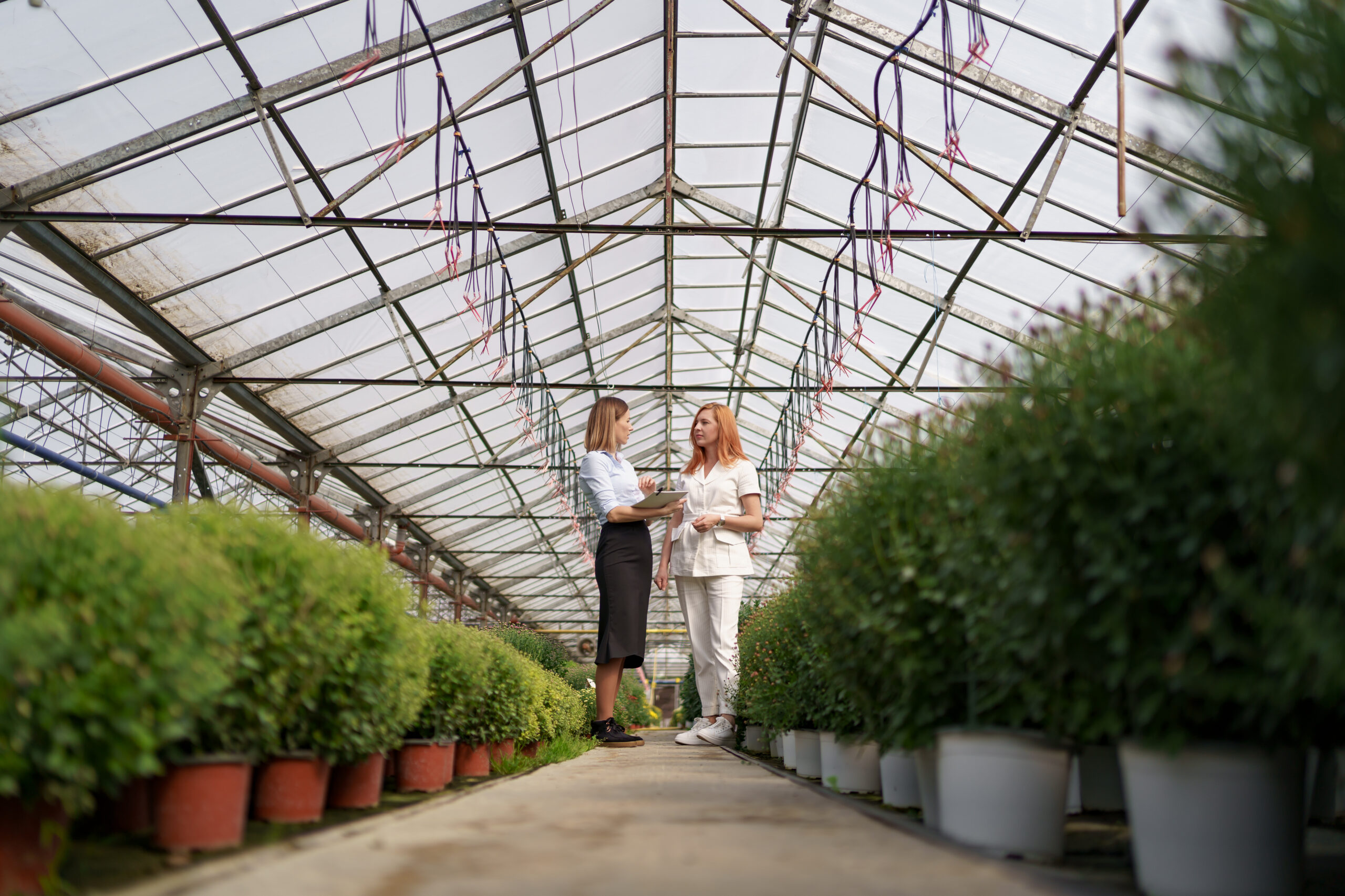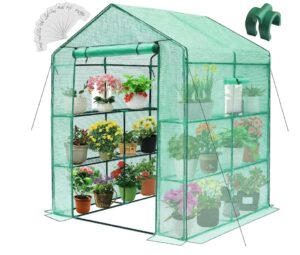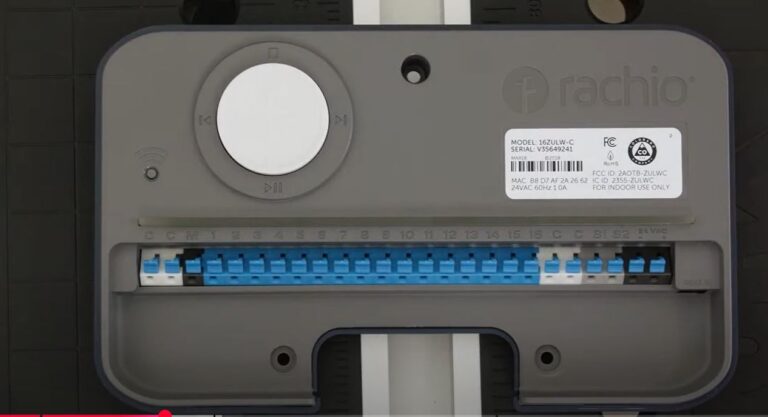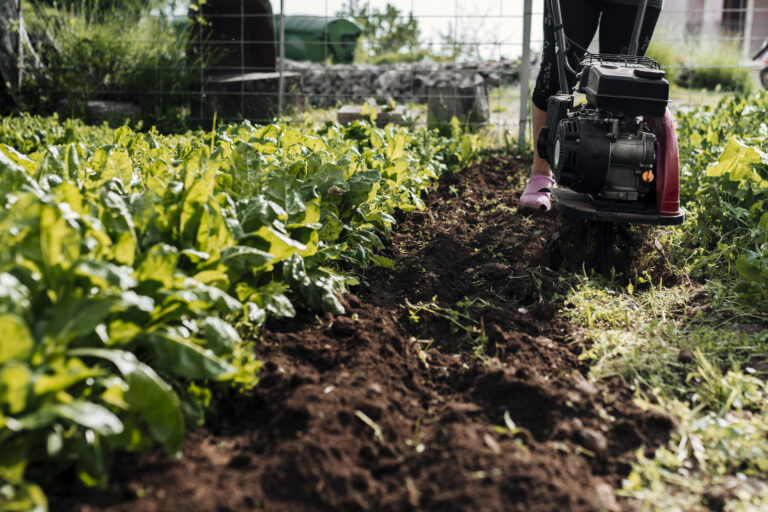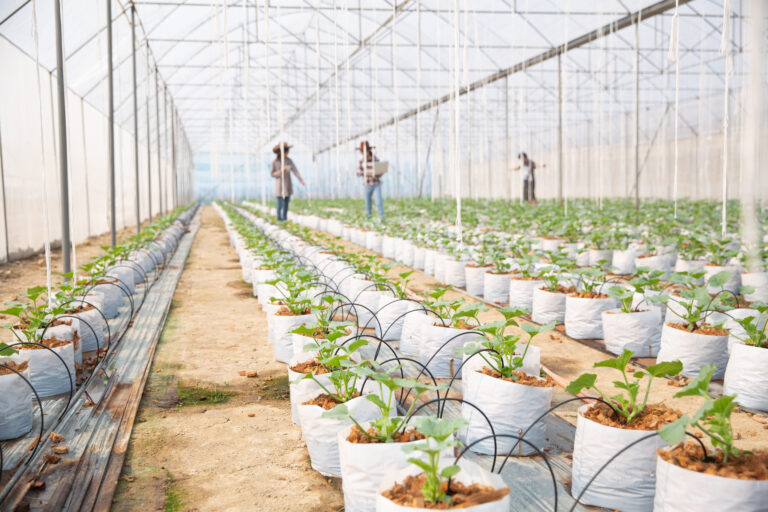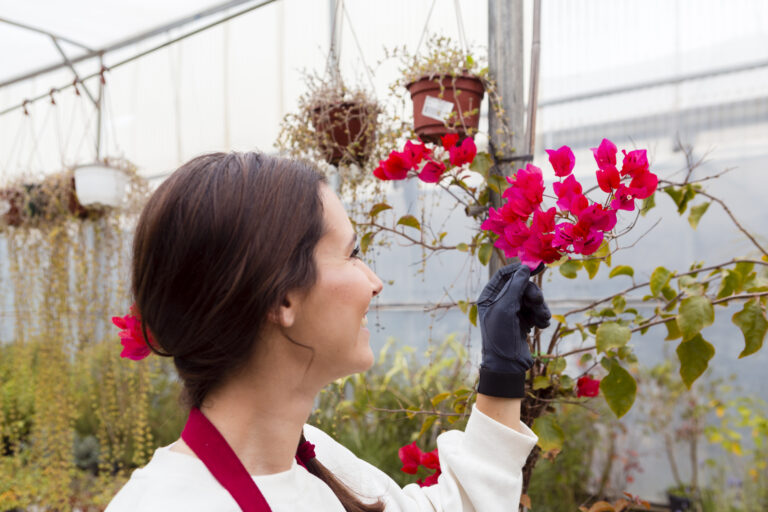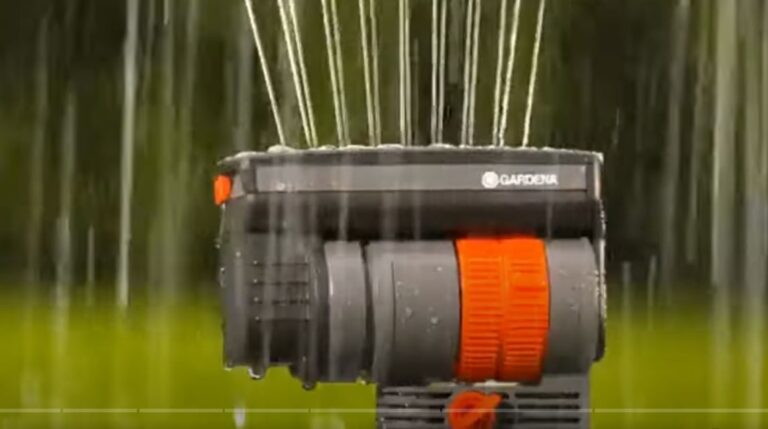Greenhouse Glass vs Polycarbonate – Which One Should You Choose in 2025?
A greenhouse isn’t just a structure it’s a controlled environment that lets you grow vegetables, herbs, and flowers year-round.
Whether you’re a beginner or seasoned gardener, choosing the right materials for your greenhouse can make a major difference in plant health, energy efficiency, and maintenance.
One of the most important decisions you’ll make is picking between glass and polycarbonate panels.
This choice affects how much light your plants receive, how well your greenhouse holds heat, and how long your investment lasts.
In this guide, we’ll break down the key differences, highlight the pros and cons of each, and share the best greenhouse kits available on Amazon to help you make a smart choice in 2025.
What Is Greenhouse Glass?
Definition and History (Traditional Choice)
Greenhouse glass is the classic material used in traditional greenhouse construction for centuries. Known for its clarity and beauty, glass was the go-to option before newer plastics like polycarbonate came along.
It allows nearly 90% of visible sunlight to pass through, offering natural, full-spectrum lighting that plants thrive under.
Types of Glass Used in Greenhouses
-
Horticultural Glass: The most basic and affordable type. While it offers excellent clarity, it’s also fragile and prone to breaking under stress or impact.
-
Tempered Glass: A stronger, safety-grade glass that’s been heat-treated to resist breakage. If it shatters, it breaks into small, less harmful pieces, making it ideal for safer installations.
When People Still Choose Glass Today
Glass is often chosen for aesthetic appeal, long-term clarity, and traditional garden styles.
Homeowners with Victorian-style greenhouses or who prioritize full sun for plants like tomatoes and peppers still favor real glass.
While it can be heavier and more expensive, it’s a durable and timeless choice for those willing to invest.
ThermoPro Hygrometer Thermometer TP350 Review: Accurate, Reliable, and User-Friendly
I’ve been using the ThermoPro TP350 for almost a year now, and it’s been a game changer for monitoring temperature and humidity around my home.
The Bluetooth connectivity lets me check conditions from another room or even outside, which is super convenient.
The large backlit display is bright and easy to read, even in low light. The comfort indicator face icon quickly tells me if the room feels too dry, humid, or just right, saving me time from guessing.
What stands out is its accuracy. The sensor updates every 10 seconds and shows temperature and humidity within a close range of other trusted devices I own.
This precision helps me keep my baby’s room perfectly comfortable and my indoor plants healthy.
The device fits anywhere thanks to its compact size and magnetic backing. I easily stick it on the fridge or move it from the bedroom to the greenhouse as needed. The portability makes it super versatile for different monitoring needs.
Another great feature is the 2-year data storage and export. It helps me track trends over time, so I can adjust my humidifier or heater before problems arise.
This feature adds real value if you want to be proactive about your environment.
Customer satisfaction is high with this model, and I see why. It’s durable, simple to use, and consistently reliable even after years of use.
If you want an easy, accurate way to monitor indoor climate, this ThermoPro is a smart buy.
Feel free to ask me questions if you want to know more about how it performs in real life. I’m happy to share tips!
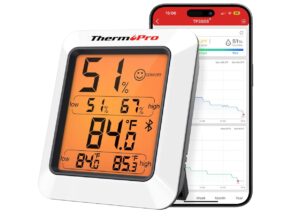
| Pros | Cons |
|---|---|
| Accurate temperature and humidity readings | Requires smartphone for full functionality |
| Easy Bluetooth monitoring up to 260 ft | App interface could be more intuitive |
| Large, bright backlit display | No external sensor option |
| 2-year data storage and export | Battery life could be longer |
| Compact, portable with magnetic backing | Doesn’t work well in direct sunlight for readings |
| Comfort indicator icon for quick status |
Ohuhu Greenhouse for Outdoors Review: Spacious, Sturdy, and User-Friendly
I have been using the Ohuhu Greenhouse for several months, and it’s been a fantastic addition to my garden.
The size is perfect, offering ample room for my seedlings and mature plants to grow comfortably. It fits nicely in my backyard without taking up too much space.
The bright PE cover lets in plenty of sunlight, which keeps my plants healthy and vibrant. The mesh side windows provide excellent ventilation, helping regulate temperature and preventing mold or overheating inside the greenhouse.
The four sturdy shelves hold a good number of pots and trays without bending or shaking. The frame feels rock solid with rust-resistant tubes, which is reassuring during windy days. I feel confident it will last many seasons.
Setting up the greenhouse was surprisingly easy. All parts are detachable, making it simple to move around if needed.
The roll-up zippered door is handy for quick access and lets me peek inside anytime without disturbing the environment.
I appreciate how this greenhouse balances warmth with airflow, creating an ideal growing environment for various plants. It’s especially helpful for my delicate seedlings during chilly nights.
Customer satisfaction is high, and I agree. This greenhouse has helped me expand my gardening efforts while keeping things organized and protected. If you want a durable and practical solution to grow plants outdoors, this Ohuhu greenhouse is worth considering.
If you have questions about using it or want tips on arranging plants inside, feel free to ask. I’m happy to share my experience and help fellow gardeners.
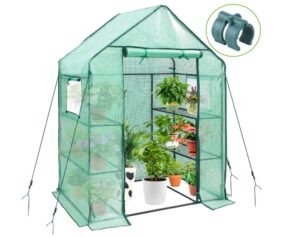
| Pros | Cons |
|---|---|
| Spacious with 4 sturdy shelves | PE cover may wear over time |
| Mesh windows provide good ventilation | Assembly instructions could be clearer |
| Rust-resistant, durable frame | Not suitable for extreme weather |
| Easy roll-up door for quick access | Limited color options |
| Lightweight and portable | Requires careful anchoring |
I picked up the Porayhut Pop Up Greenhouse Tent last fall while prepping for colder nights. What drew me in first was the size.
At 72 x 72 x 84.6 inches, it had no problem fitting my larger potted plants, a seedling shelf, and even my compost bin.
Setup took less than 10 minutes. No tools. It folds down compact and is light enough to carry without help. I used it both in my backyard and later moved it into my garage when frost warnings hit hard.
The best part? The light. The double-layer PE mesh allows in plenty of sun but diffuses it evenly. It brightens up the whole inside while protecting the leaves from direct burn.
The tent also holds heat surprisingly well overnight.
I liked the ventilation windows on the sides. They helped avoid too much moisture buildup. The front zippered door made it easy to walk in and check trays or reposition pots. When needed, I simply rolled it up and secured it.
Durability was better than I expected. The Oxford cloth is thicker than what I’ve used in smaller pop-up greenhouses.
Wind didn’t budge it, thanks to the 12 ground stakes. It even handled light snowfall without sagging.
If you’re just starting out or need a temporary greenhouse that performs well without being permanent, this is a solid choice. Especially great for people who want portability without losing growing space.
Let me know if you want to see how I arranged my shelves inside. Or ask about cold frame alternatives if you’re in an extreme zone. Happy to share tips!
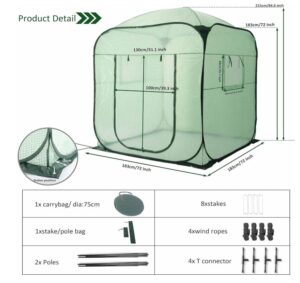
| Pros | Cons |
|---|---|
| Excellent brightness and light diffusion | Not designed for heavy snow loads |
| Portable and folds for storage | Requires extra care when folding back down |
| Durable double-layer PE mesh and Oxford cloth | Zipper can stick if handled roughly |
| Large walk-in space for multiple plant types | Not suited for permanent year-round use |
| Side vents and front door for airflow control | Stakes may need reinforcement in high winds |
| Fast and easy setup, no tools needed | No built-in shelves or flooring included |
When Is Polycarbonate the Better Choice?
Polycarbonate shines in harsh weather conditions. It’s tough, impact-resistant, and much lighter than glass, making it easier to install or move.
If you live in areas with hail, strong winds, or heavy snowfall, polycarbonate panels will stand up better to the elements.
It’s also great for beginners or those on a budget since it’s generally more affordable and less fragile than glass.
The material provides better insulation, helping keep your greenhouse warmer in colder months and cooler in the summer.
If you have kids or pets at home, polycarbonate is safer because it won’t shatter if accidentally bumped or hit. This makes it a popular choice for family-friendly gardens.
Greenhouse Plastic Sheeting 12×25 ft Review: A Bright, Secure Fit for Serious Growers
I recently replaced the old cover on my raised-bed tunnel with this 12×25 ft 6 mil greenhouse plastic sheeting. The first thing I noticed was the quality.
It’s thick and flexible, but not too stiff to handle. I managed to install it on my own with just clamps and a ladder.
The brightness inside changed everything. This film lets in over 90 percent of light. My lettuces perked up within days, and my tomato seedlings stretched straighter.
It’s not crystal clear, but the hazy layer actually softened the sunlight in a good way.
I also appreciate the anti-drip feature. After one night of frost and dew, I checked the inside and saw no moisture falling on the plants.
Instead, the water ran neatly down the sides. That small design detail helps prevent mold and leaf damage. It shows the thought put into this product.
So far, it’s held up great in wind. The 5-layer UV-resistant polyethylene feels tough and flexible. I expect it will last the full three years, maybe more with care.
I’m in a four-season zone, and it’s handled frost and 30-mph gusts without tearing.
If you’re covering a grow tunnel or doing a DIY greenhouse project, this is a solid solution. The fit is generous, and trimming is easy.
I plan to use the leftovers to wrap some cold frames this fall.
Let me know if you want to see how I framed it in or how it performs in snow. This sheeting made a big difference for my early spring planting, and I’d be happy to help others get the same results.

| Pros | Cons |
|---|---|
| 90% light transmission helps plants thrive | Not completely clear – has a hazy appearance |
| Anti-drip technology prevents water damage to plants | Requires secure installation to prevent flapping in wind |
| Thick 6 mil, 5-layer polyethylene offers durability and UV resistance | May need trimming depending on greenhouse size |
| Flexible and easy to handle and install | Doesn’t include securing tools or clamps |
| Works well in varied climates – wind, frost, and sun | Some users may prefer thicker options for extreme weather |
| Multi-use: great for grow tunnels, cold frames, or DIY greenhouses | Might not last full 3 years in intense sun zones without care |
Expert Tips for Making Your Final Decision
When choosing between glass and polycarbonate, first consider your local climate, budget, and the size of your greenhouse.
Ask yourself: Do I want maximum light for my plants, or do I need better heat retention for colder months? Glass offers superior clarity, but polycarbonate provides excellent insulation.
For those living in colder regions, polycarbonate is often the better bet as it traps heat more effectively and reduces energy costs.
On the other hand, if you’re gardening in a mild climate and want your greenhouse to be a beautiful structure, glass might be worth the extra investment.
Think about your priorities and lifestyle, then check out our carefully selected top-rated greenhouse kits on Amazon to find the perfect fit for your needs.
What Is Polycarbonate Greenhouse Paneling?
Definition (Modern Alternative)
Polycarbonate is a lightweight, durable plastic material that has quickly become the preferred option for modern greenhouses.
It’s virtually unbreakable, blocks harmful UV rays, and provides insulation benefits that traditional glass lacks.
Single-Wall, Twin-Wall, and Multi-Wall Explained
-
Single-Wall: Clear and light, good for small hobby greenhouses where budget is a concern.
-
Twin-Wall: Features two layers with an air gap that improves insulation. Balances light diffusion with heat retention.
-
Multi-Wall: Multiple layers (3+), excellent for colder climates. Superior insulation, but less light transmission and higher cost.
Why It’s Becoming More Popular
Polycarbonate is rising in popularity thanks to its shatter resistance, energy efficiency, and ease of installation.
It provides year-round growing stability without the weight or fragility of glass, making it ideal for DIY gardeners and commercial growers alike.
Glass vs Polycarbonate: Side-by-Side Comparison Table
| Feature | Glass | Polycarbonate |
|---|---|---|
| Light Transmission | 90% (very clear) | 80–85% (diffused light) |
| Durability | Breakable under impact | Impact-resistant (200x stronger) |
| Insulation | Poor (needs heating) | Excellent (traps heat better) |
| Weight | Heavy | Lightweight |
| Lifespan | 25–30 years | 10–15 years |
| Cost | Higher upfront | More affordable |
| Maintenance | Easy to clean, algae buildup | Can scratch, UV degradation |
FAQs: Glass vs Polycarbonate Greenhouses
Which lasts longer?
Tempered glass can last decades with proper care and stable installation, often outlasting the structure itself. Polycarbonate panels typically last 10 to 15 years, depending on thickness and UV protection. However, polycarbonate may yellow or degrade faster under harsh UV unless it’s treated.
Can you mix both materials?
Yes, many gardeners do. Some use glass panels on the south-facing wall for light, and polycarbonate on the roof or sides for insulation. Mixing materials can help you balance aesthetics and performance, especially in variable climates.
Which is safer in storms?
Polycarbonate wins here. It’s impact-resistant and less likely to shatter in strong wind, hail, or during transportation. If safety and durability are a priority especially in storm prone regions polycarbonate is the better option.
How do I clean and maintain each?
-
Glass: Easy to clean with glass cleaner or vinegar and water. Keep an eye out for cracks and reseal any loose panels.
-
Polycarbonate: Clean with mild soap and water. Avoid abrasive cloths or harsh chemicals. UV-treated polycarbonate resists yellowing, but dirt buildup should still be removed regularly to maintain light penetration.
Final Verdict: What’s Right for You?
Both materials have strong advantages, but your choice should come down to what matters most to your growing needs.
Choose greenhouse glass if you want a timeless look, superior clarity, and don’t mind a higher upfront cost and heavier installation.
Go with polycarbonate if you need better insulation, a safer option for rough weather, and a lightweight material that’s easier to install and replace.

